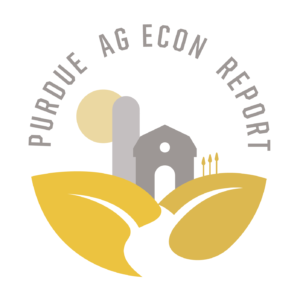Soybeans Supplies Tighten
October 23, 2011
PAER-2011-19
Chris Hurt
Weather lowered 2011 national soybean yields to just 41.5 bushels per acre in USDA’s September estimate, about 2 bushels below trend. In Indiana, the soybean yield estimate was dropped to just 42 bushels per acre, the lowest Indiana yield since 38 bushels in 2003.
The small crop means that usage will have to be cut by about 150 million bushels and prices will have to be high enough to discourage some end users. This will be accomplished primarily in the export market, where shipments are expected to be down by 125 million bushels.
USDA suggests this will leave just 160 million bushels as ending stocks at the end of August 2012. This represents just a 5% stock-to-use ratio and means soybeans will remain in very short supply.
However, South American acreage is expected to rise by nearly 5%, and if yields are also up about 5% from last year’s short-crop, then relief in world shortages may arrive by late this coming winter. The biggest factors to impact bean prices in the coming months are probably Chinese imports and the size of the South American crops. China is expected to purchase nearly 9% more soybeans from the world this year, but all that growth is expected to be met by South America. China purchased a record amount of 2010 crop soybeans from the U.S totaling, 955 million bushels, which represented 64% of all our exports.
USDA expects average farm prices to reach a record of $13.15 a bushel for the U.S. average farm price. The previous record was $11.30 from the 2010 crop. Just like corn, there will be abundant storage space available in Indiana for soybeans. This will provide a somewhat stronger basis than normal at harvest time.
Because of the larger anticipated harvest in South America, the current carry in the cash market shows returns to on-farm soybean storage to be positive only through December or January. For commercial storage, the current higher bids for later in the marketing year are not sufficient to cover the interest costs and the commercial storage fees. Unless elevator managers lower these fees, current bids are suggesting selling at harvest time rather than use commercial space. Of course some may be unwilling to sell at harvest because they want more income in 2012, or because they are willing to speculate for higher prices. Higher prices could be linked to more aggressive purchases from China, as some believe, or to weather threats in South America.
